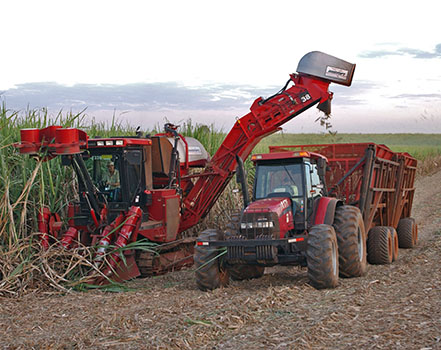Mechanization strategies
Sustainable mechanization strategies should provide a framework for making decisions on how to allocate resources, how to address current challenges, and how to take advantage of opportunities that arise. It should be a structured, but flexible, participatory process which leads to the definition of a coherent plan of achievable actions and programmes.
Strategy formulation
The purpose of a sustainable mechanization strategy is to create an enabling policy framework, as well as an institutional and market environment in which farmers and other end-users have a wide choice of farm power and equipment suited to their needs within a sustainable delivery and support system.
The outputs of the strategy formulation will include a range of policy and institutional recommendations supported, when necessary, by programmes and projects designed for its implementation. The implementation of a mechanization strategy involves many different stakeholders. Therefore, it is strongly recommended that emphasis is made on adopting a participatory formulation approach (involving all stakeholders at all stages of the process). The main groups are: farmers, using mechanization technologies, private sector equipment and service providers in mechanization, and the public sector.
Prior to making a decision on the strategy formulation, it is necessary to identify and define the conditions which should already be in place. The development of the agricultural sector can be hindered by bottlenecks and constraints that exist within the agricultural mechanization sub-sector.
When developing mechanization strategies, FAO takes into consideration all three pillars of sustainability:
- Economic. Adequate investment in agricultural mechanization ensures increased crop yields and added value. Some farmers can develop hire service business enterprises – to hire out agricultural machinery services to other farmers. FAO addresses commercial as well as financial links between farmers and other stakeholders such as retailers, distributors, manufacturers, importers and service providers in building a sustainable agricultural and food sector.
- Social. Benefits from the application of and access to mechanization include a reduction in the drudgery of farm work implying more time to engage in other activities,the improvement of a farmer’s status in a local community, and renewed attractiveness of the agricultural sector to rural youth. Increased crop yields can reduce the vulnerability of smallholder farmers to socio-economic and environmental crises. The impact of mechanization on rural employment actually develops new employment opportunities such as manufacturing, repair, and provision of mechanization services.
- Environmental. Productivity and food security need to be improved while preserving and enhancing natural resources and the environment. Physical limits to land and water availability within ecosystems is often worsened by climate change. By including sustainable mechanization in its projects, FAO promotes conservation agriculture practices which contribute to soil conservation and water use efficiency.
Process for formulating a strategy
- Prepare a detailed work plan
- Undertake a detailed analysis of the existing national situation
- Define strategy goals and objectives and identify and prioritize issues that will impact its implementation
- Establish a plan of action
The strategy should be steered by a project coordinator, who leads the project team. This team is responsible for elaborating the plan of action, carrying out an analysis of the stakeholders, and collect and analyze the required information. The information gathered will enable to set a baseline of the status of mechanization in the country, which includes general data about the country (demographic, economic, political, etc.) and detailed information regarding agricultural mechanization.

